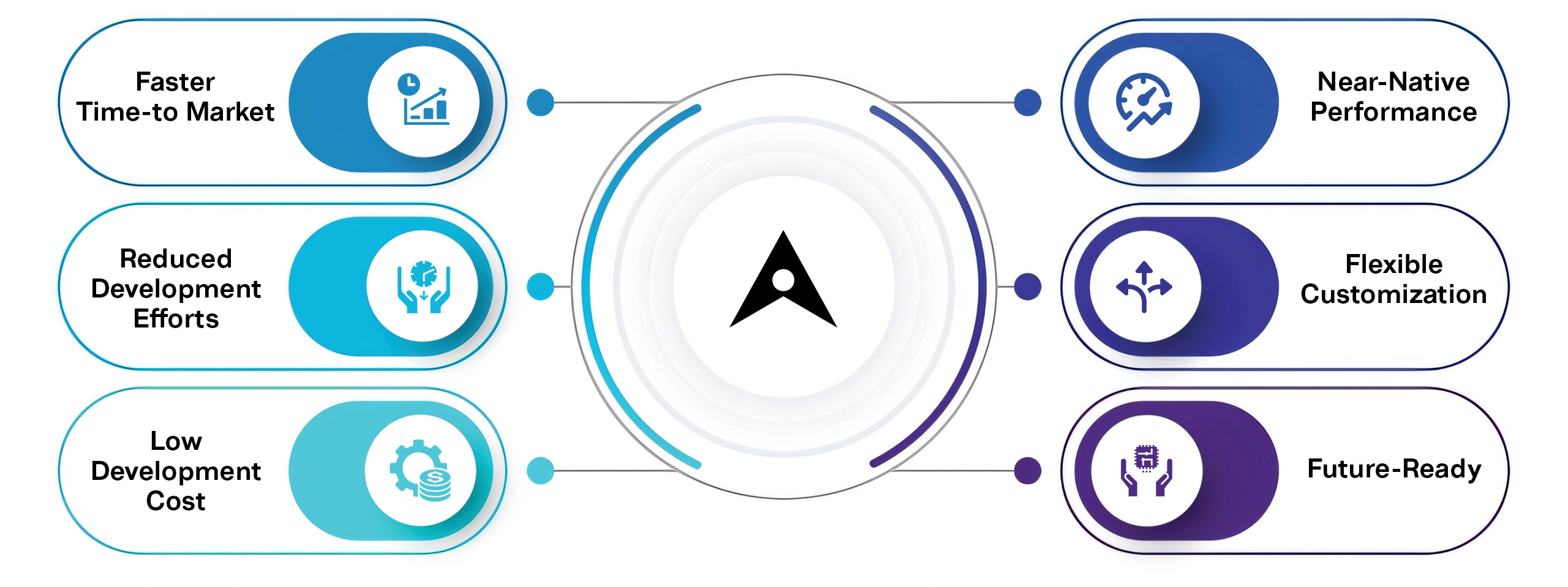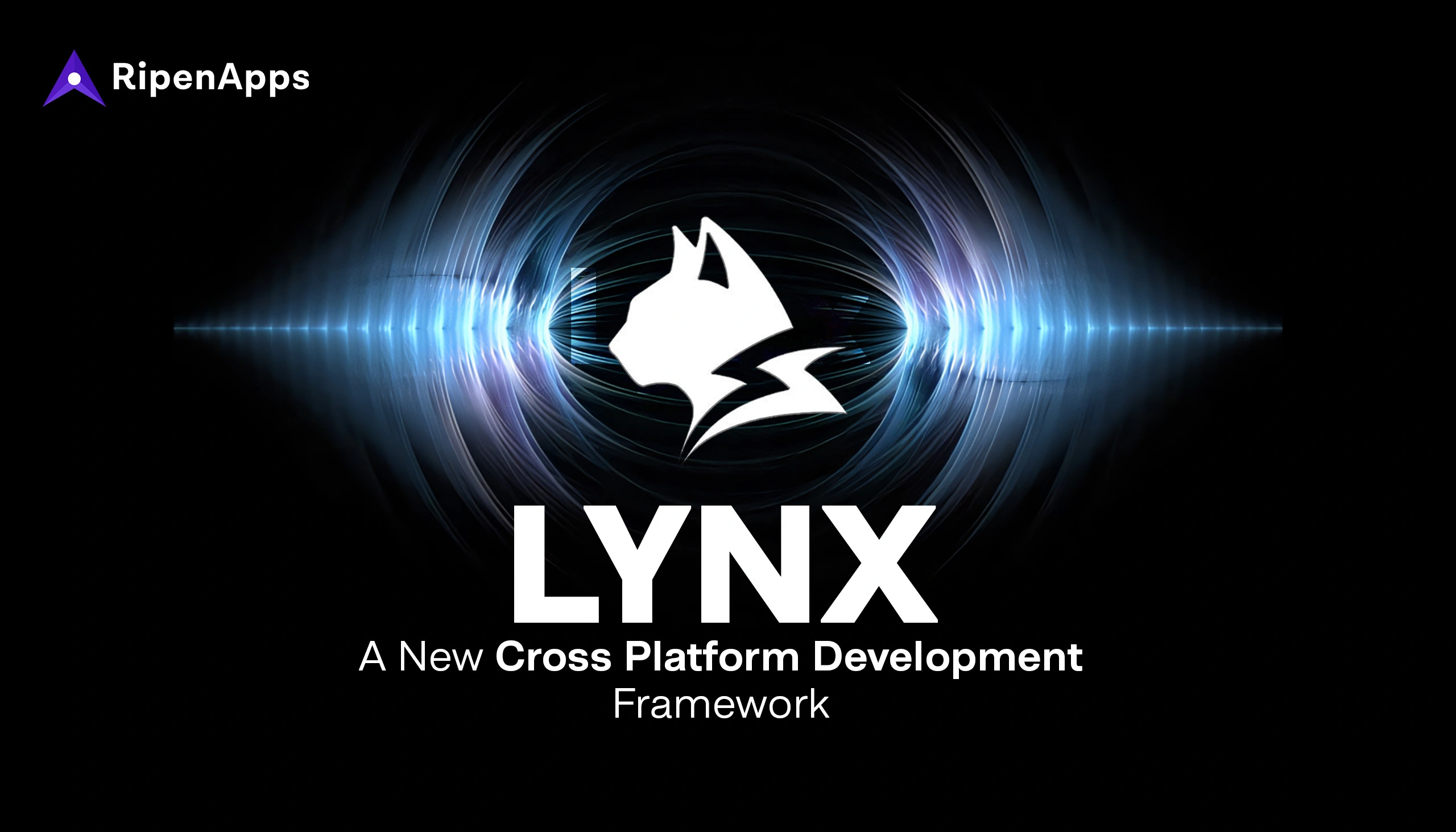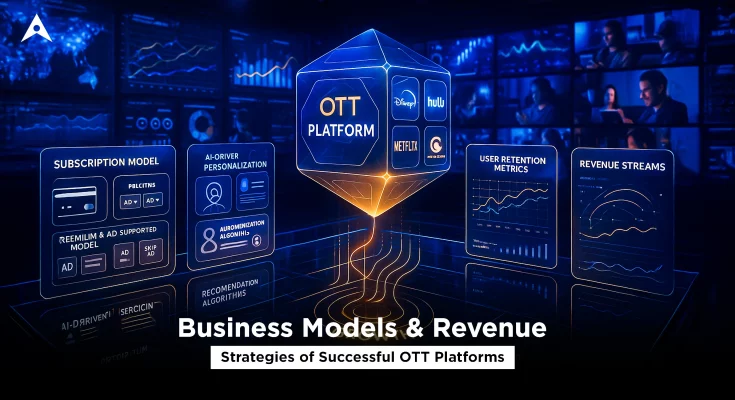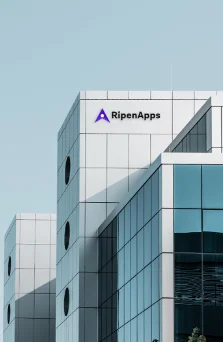In 2025, the mobile app development sector is moving at a breakneck pace, pushing developers to rethink their strategies. With consumer expectations soaring and devices evolving rapidly, the demand for faster, adaptable, and cost-efficient apps is at an all-time high. This is where Lynx, a new and promising cross-platform development framework, is making waves.
Designed to tackle the challenges of fragmented app ecosystems, Lynx enables mobile app developers to build powerful apps for multiple platforms with a single codebase, streamlining both the development process and long-term maintenance. Its promise of seamless performance parity across iOS, Android, and web platforms makes it a compelling choice for businesses aiming for scalability and consistency.
But why does Lynx matter in 2025?
Because the future of cross platform app development demands more than just compatibility—it requires efficiency, flexibility, and superior user experiences. As cross-platform frameworks like Flutter and React Native face limitations in performance optimization, Lynx emerges as a potential disruptor with its modern architecture and robust capabilities.
In this blog, we’ll take a deep dive into what makes Lynx unique, its core features, and how it stands to redefine cross-platform development in the coming years. Whether you’re an app entrepreneur looking to reduce development costs or a developer seeking next-gen tools, Lynx is worth exploring. Let’s uncover why it could be the framework of the future.
Table of Contents
What is Lynx?
Lynx is a next-generation cross-platform development framework which is designed to simplify and accelerate the creation of multi-platform applications. As a newer alternative to existing frameworks such as Flutter, React Native, and Xamarin, this cross-platform framework holds a unique character. It assists the developer with a rather simple set of ways to accomplish enhanced performance.
At its core, Lynx lets developers code once and deploy seamlessly across iOS, Android, web, and desktop environments. Thereby it reduces the time, effort, and cost of maintaining separate native codebases. The thing that sets Lynx apart from any other is its primary focus on efficiency and native-like performance. Whereas various old cross-platform frameworks show considerable performance constraints or compatibility issues.
The way Lynx is designed goes a long way toward resolving some intricate issues by employing an optimized rendering engine along with certain advanced compilation techniques. Hence providing universally consistent user experiences with seemingly minimal lag, despite platform loads.
Key Features of Lynx:
- Single Codebase Deployment: Write once, deploy across iOS, Android, web, and desktop platforms.
- Native-Like Performance: Optimized rendering engines for smooth, lag-free user experiences.
- Hot Reload: Instantly view code changes without rebuilding the app.
- Modular Architecture: Simplifies code maintenance and scalability.
- Advanced UI Components: Pre-built, customizable widgets for faster development.
- Seamless Integration: Easy integration with third-party services and APIs.
- Enhanced Security Protocols: Built-in encryption and authentication support.
- Optimized for Scalability: Efficient handling of high user loads and data-intensive processes.
- Automated Testing & Debugging: Streamlined QA process with built-in testing tools.
- Cloud & IoT Ready: Native support for cloud storage and IoT device connectivity.
Why Lynx is Trending in the Mobile App Development Market?
In the domain of mobile app development, speed and productivity are very important. These are the primary factors that have given hype to Lynx as a new cross-platform development framework.
It offers an open environment for the development of powerful, robust apps on more than one platform, without losing the quality of the app. The question is what makes Lynx more distinct to the eye when so many frameworks already exist? Here is your answer to this rising trend.
1. Unified Development for Multiple Platforms
The most important reason for Lynx to be one hotcake right now for every cross platform app development company is, that it can get iOS and Android running on a single codebase.
This way, your app would face less demands of time to be built and directly apply it with the same performance and user interface (UI) on all connected devices. So, businesses can get in touch with a broader audience more quickly without having to run on different development layouts. Thus, it makes Lynx an economically viable option.
2. Short Time-to-Market
Speed holds paramount importance in the competitive digital ecosystem today. Developers tend to adopt easier codings of speed released by Lynx, which builds and passes the deployment point much more effectively.
By utilizing one code base, companies providing cross-platform application development services can quickly take an app from prototype to test and launch enough to be ahead of market trends. The quicker the time-to-market is being finished, the better for startups, as well as medium to large businesses would be..
3. Enhanced Performance with Native-Like Speed
Contrary to some traditional cross-platform application frameworks, which sacrificed performance for the sake of facilitated implementation, Lynx pushes for native-like application speed. Lynx goes directly to the API and compiles native functions to keep each app running smoothly and responsively. Leading mobile app development company in USA consider this feature through which Lynx can take an edge in the market.
4. Cost-Efficiency Without Sacrificing Quality
When it comes to reducing mobile app development cost but keeping the product mainstream, Lynx is a strategic tool. It inevitably cuts down overhead expenses. It works as an incredibly great asset to startups and SMEs which seek to create feature-rich applications on a budget.
5. Seamless Integration with Cloud & IoT
Lynx’s adaptability to third-party tools, APIs, and modern technology implementations makes it an invaluable asset. Blending cloud services, IoT, and the rest of the modern tricks, Lynx becomes a future-proof development option for cutting-edge app projects.
How is Lynx Different from Other Cross-Platform Development Frameworks?
Among its types, Lynx is brilliantly making space for itself within the cross-platform application development zone. With a novel structure, Lynx stands out against the traditional overlay of the typical frameworks in terms of performance and simplified workflow. Here, we shall examine Lynx in its varied capacity to lead against other top cross-platform development frameworks in the market.
1. Performance Efficiency with Near-Native Speed
The most distinguishing point for Lynx lies in its high level of performance approaching levels seen by native applications. Instead of making use of JavaScript bridges like lots of them do where Lynx uses high-performance rendering engines and interacts directly with native APIs, significantly reducing performance lag. Again, many existing frameworks prioritize code reusability over performance optimization.
However, Lynx strikes the perfect balance, giving developers the capability to write once and run anywhere without compromising on speed. This model is ideal for those looking to develop elaborate, platform-specific applications like custom Android app development and iOS solutions.
2. Better UI Consistency Across Platforms
One of the biggest pain points in cross-platform mobile app development is keeping UIs and UXs consistent across different platforms. Even when popular frameworks like React Native or Xamarin provide shared UI components, there can be slight deviations brought in by platform-specific rendering. Here, Lynx takes one step up by offering a unified rendering layer ensuring pixel-perfect consistency across iOS, Android, and into the web.
All elements of the adaptive UI toolkit automatically adjust according to design elements and patterns of the various platform guidelines for seamless, polished consistency. This manner helps companies build consistent brand experiences without getting too superfine with platform-specific tweakery.
3. Streamlined Development and Faster Time-to-Market
Among the top cross-platform app development challenges where most developers face difficulty is balancing development speed with quality. Lynx, on the other hand, comes ahead with an architecture that is even more simplified than before. The modularity of design and reusability of elements that Lynx offers allow developers to go about building and deploying applications more quickly without sacrificing stability.
This is an advantage for companies looking for cross-platform application development services because a decrease in the time required to develop would positively impact the time at the market. Furthermore, the tools in Lynx and automated testing services speed up the QA process. It’s such a time generator of iterative feedback and, therefore, rapid delivery of functional software applications.
4. Built-In Support for Emerging Technologies
Lynx is very future-ready. It provides native integration with advanced technologies like AR/VR, IoT, and blockchain, thus making it a very appealing choice for companies that are trying to create innovation in their apps.
In contrast, with most frameworks requiring third-party libraries or plugins to integrate with these technologies, Lynx is built to offer the support of these native integrations. It works first and foremost with machine learning libraries, various cloud APIs, and real-time data processing. These contributions remain very versatile choices for technology-applicative applications.
5. Simplified Maintenance and Scalability
When comparing app development using the native framework and cross-platform tools as Native vs Cross-Platform App Development: Which is Best For Your Mobile App Project?, scalability post-launch and trouble-free maintenance prove to be very important. Lynx has developed its ecosystem using modular coding practices, leading to quick updates, and maintenance options over time.
Other frameworks create complications added to new features, which would often mess up with integration. However, Lynx remains constant by foregoing such issues by contracting a component base, facilitating further scaling. Thus, it meets the exact criteria for larger software-oriented start-ups and companies to scale apps further as they grow and shape them efficiently with fresh functionalities.
Comparison Table: Lynx vs React Native vs Flutter
|
Feature |
Lynx | React Native | Flutter |
|
Language |
Modern, custom syntax |
JavaScript |
Dart |
|
Performance |
Near-native with direct API access |
Good, but uses JavaScript bridge |
Excellent with Skia engine |
|
UI Consistency |
Pixel-perfect across platforms |
Platform-dependent |
Highly consistent, native-like |
|
Development Speed |
Fast, modular architecture |
Fast, needs platform-specific tweaks |
Fast, thanks to hot reload |
|
Code Reusability |
High, reusable components |
Medium, needs adjustments |
High, single codebase |
|
Emerging Tech |
Built-in support for AR/VR, IoT |
Third-party libraries required |
Partial, third-party integrations |
|
Learning Curve |
Easy, dev-friendly syntax |
Moderate for JavaScript devs |
Moderate, requires learning Dart |
|
UI Customization |
Highly flexible toolkit |
Limited without libraries |
Rich UI customization |
|
Hot Reload |
Built-in, instant preview |
Yes, but slower than Flutter |
Yes, one of the fastest |
|
Platform Support |
iOS, Android, Web |
iOS, Android, Web |
iOS, Android, Web, Windows, macOS |
| Ideal For | Complex, feature-rich apps | Medium-complexity apps |
Cross-platform apps with rich UI |
Major Benefits of Using Lynx for Businesses

Lynx is the new entrant in the cross-platform development market, which is emerging as a game-changer. It is because its improved performance and near-native speed, coupled with modular development ability, seem just perfect for organizations constructing future-proof applications along with many other benefits. Here’s how Lynx is delivering tangible benefits to businesses, making it a preferred choice in the Cross Platform App Development Guide For Businesses.
1. Faster Time-to-Market with Reduced Development Efforts
Lynx is gifted with fast performance under a modular structure, which means businesses are now able to rush onto iOS, Andriod, and Web platforms at the same time. Whether the market is moving more swiftly – as with e-commerce fintech or on-demand, Lynx can make a trade-off in market time to perfect positioning.
Instead of coming up with your own in-house cross-platform mobile app under those circumstances, you can get a jump on the requisite business-soft-target audience around the globe.
2. Keep expenses low without diluting Quality
Mostly, it’s expensive to create separate native applications for different platforms, especially for smaller entities dealing with start-up expenses. Lynx conveniently defrays these kinds of charges resulting from multiple-platform maintenance, cutting down on all costs of development, testing, and updates. In the end, looking for ways to get returns on investments should thus come as an obvious choice, rather than a negligence path.
Moreover, companies that hire best cross platform app developers in USA using Lynx can potentially benefit from reduced resource allocation and simplified app maintenance. As a result, this makes it easier to introduce new features or updates without costly overhauls.
3. Almost Near-Native Performance for a Superior User Experience
Although many cross-platform frameworks fail as machines that chew up performance, Lynx ensures smart execution and low accelerator responsiveness through direct API access and finely tuned-rendering. Thus, it means no lag will hold your animations, interactions, or data-feather-heavy tasks back.
For an enterprise, this sets flags in apps, heralding to the customer mobile an enhanced user experience that presents as essential retention in a business. It is irrespective of whether the app is really high-performing in the world of options, such as a fintech, or positioned in the interest of the versatile music of e-commerce. Lynx ensures that users can feed well amid a flawless experience, accommodated across multiple devices.
4. Get Enhanced UI/UX with Flexible Customization
UI/UX is the biggest influential factor today when it comes to attracting and holding any audience in the competitive market. Lynx is loaded with purposefully designed and configurative attributes. Together, they point at businesses fitting up highly desirable and solidified UX. Its widget system provides wide and fine-tailored control so anybody might implement the design to reinforce brand integrity.
However, collaborating with a UI UX design agency that specializes in Lynx can help businesses create apps with intuitive navigation, modern aesthetics, and enhanced usability, boosting user satisfaction and driving growth.
5. Ready for Future Technologies from the Start
One potential USP (unique selling point) for Lynx is its full compatibility with futuristic tech like AI, augmented reality, virtual reality, and, last but not least, IoT, to mention a few. This compliance allows the company to fit itself better for the accommodation of novel concepts in its software application.
For instance, AR provides valuable assistance to retail businesses for trying-on purposes, whereas IoT lends support for remote patient monitoring and other important healthcare projects. This is how Lynx’s support for such technologies future-proofs the app, making it scalable and adaptable to evolving trends in the mobile app development industry.
Main Challenges and Limitations of Lynx
As much as Lynx is abundantly popular in the cross-platform app development sector, such an application comprises heaps of challenges. Despite the merits of Lynx being efficient, flexible, and near-native performance, multiple difficulties, and constraints could contravene Lynx’s performance in certain scenarios. It is only prudent for organizations to understand these overarching challenges first before opting to use Lynx for cross-platform development service.
1. Limited Third Party Support for Libraries and Plug-ins
Lynx is recently introduced with the comparison of other established frameworks like React Native and Flutter. The ecosystem for Lynx is still under development, with fewer libraries, SDKs, and plug-ins available. For such business cases where the highest complex functionalities are required like payment gateways, analytics tools, or tracking in real-time.
Hence, these gaps may result in extended development cycles and more coding-from-scratch scenarios. Similarly, the need for more custom integrations would point out much reliance on home-grown solutions. As a result, some costs and time-to-market in any project would be escalated.
2. Performance Gaps for Highly Complex Applications
Despite most applications running as close to their native higher levels of performance, Lynx could appear to cause roadblocks to performance issues in very resource-heavy applications. These might be the apps that underperform some apps that are native because all the burdens from Lynx eat up some resources.
As a result, from a business perspective, such issues are much more likely to be those that detract from the brand or the app’s user feedback–a slight lag or inconsistency in responsiveness rates directly affects user experience and retention.
3. Limited Community and Documentation
Lynx is being considered a novelty; hence, the developer community is still in the pipeline due to avoiding the well-documented forums or support groups and documentation bases that, for instance, React Native and Flutter offer.
The drought of documentation available turns into a real hardship for troubleshooting and best practices when developers are desperate to surf through tutorials or any other valuable suggestions. With staggered problem-solving, this one lot can cost companies by improving cross-platform development services.
4. Compatibility Issues with Older Devices
Despite an above-average performance in the context of modern platforms, Lynx may sometimes confront compatibility issues with older OS versions or legacy devices. This is particularly unsettling for companies catering to a varied user group across a region where older devices are common.
Compatibility issues can lead to a litany of challenges, ranging from app crashes to a fall in performance to even inconsistent UI rendering in selected devices that will continue to dampen the user experience and app ratings. It underscores a critical step–ensuring to overall test across as many devices as possible.
5. Learning Curve for Developers
Even though Lynx has been established to facilitate cross-platform development, a moderate amount of learning is necessary for those developers used to popular frameworks. For that matter, the industry always changes, such as with its new architecture, syntax, and modular system, thus requiring developers’ training or upskilling their staff. For businesses partnering with Top Cross Platform App Development Companies, this may result in longer onboarding periods and potentially higher development costs in the short term.
The Future of Lynx in Cross-Platform Development
The possibilities that Lynx presents are staggering, delivering almost-native performance, scalability, as well as quicker development life cycles. Any new technology seems the right choice for the current age, as it grows and adapts to the limitations considered its constraint currently. Lynx could go on to dominate in cross platform app development trends.
For those businesses seeking cutting-edge cross-platform app development services, Lynx becomes that catalyst for a successful and competitive landscape provided there is agility, efficiency, and competitive advantage to meet and shape the future of cross platform app development market, all by these signs:
- Mainstream Adoption by Businesses
- Enhanced Performance and Stability
- Expansion of the Developer Community
- Integration with Emerging Technologies
- Increased Enterprise-Level Adoption
Final Thoughts
Lynx could deliver an appealing new era to businesses that are in pursuit of going live with their projects faster and require simplified coding, offering a probable solution to create superior cross-platform app experiences. Whether you are starting up the ladder to rapid scalability or are setting foot as an enterprise toward a consistent UX design across all platforms, Lynx is adaptable and has the efficiency to see you through your goals.
Thus, keeping an eye on Lynx’s evolving capabilities will be essential for businesses and developers looking to leverage the next generation of cross-platform development frameworks. In this case, RipenApps stands out as the best destination for getting high-quality cross platform app solutions backed with the latest technology. Our team stays up-to-date with current trends and market needs.











 India
India USA
USA Australia
Australia Canada
Canada UK
UK UAE
UAE
